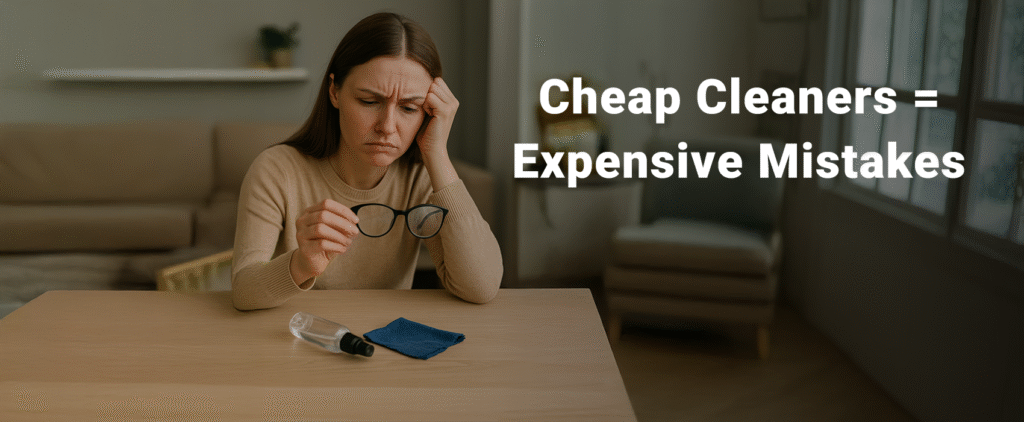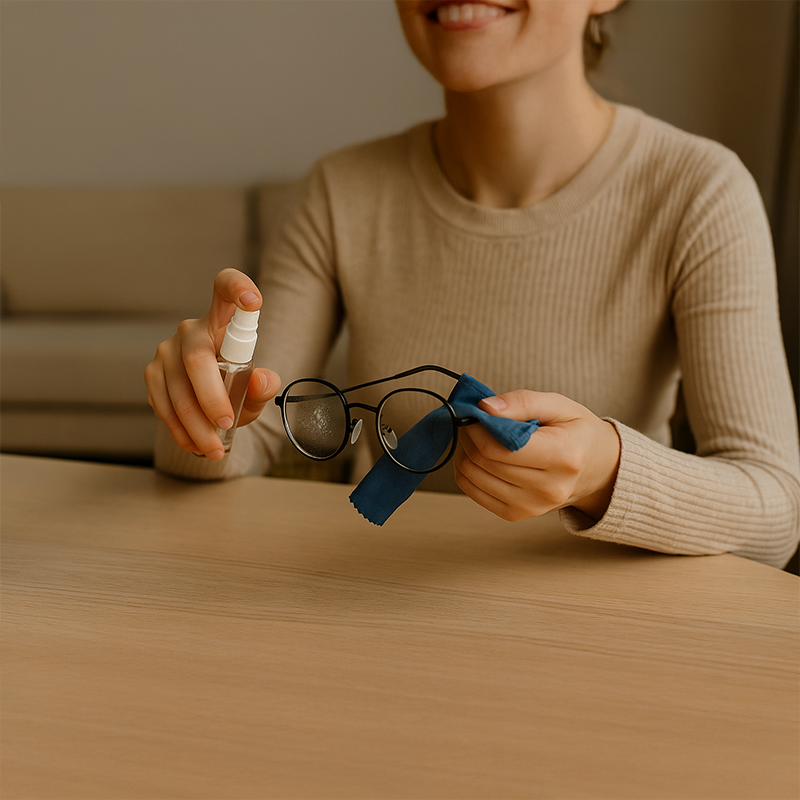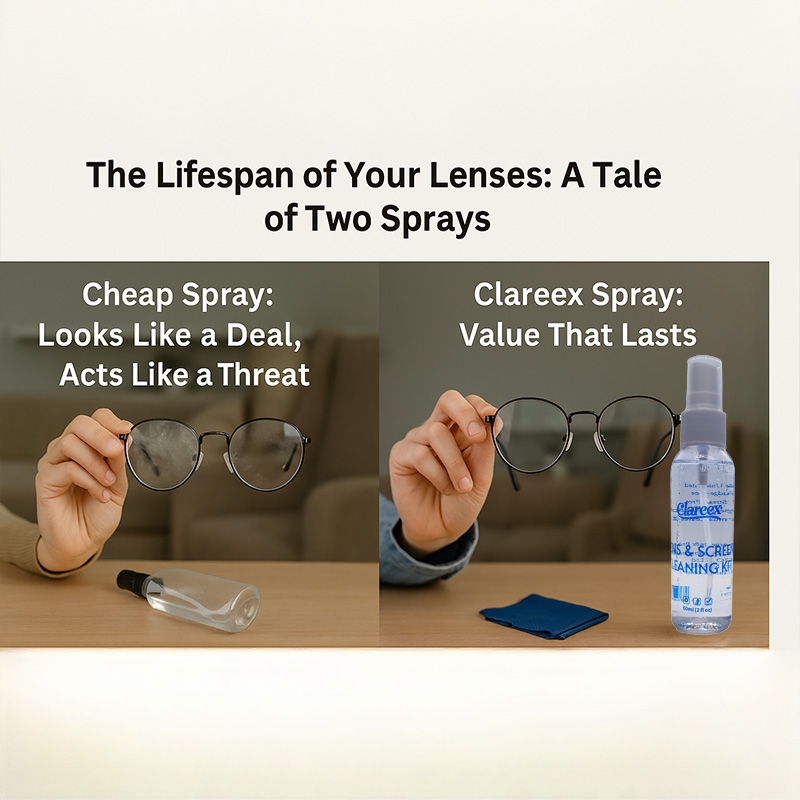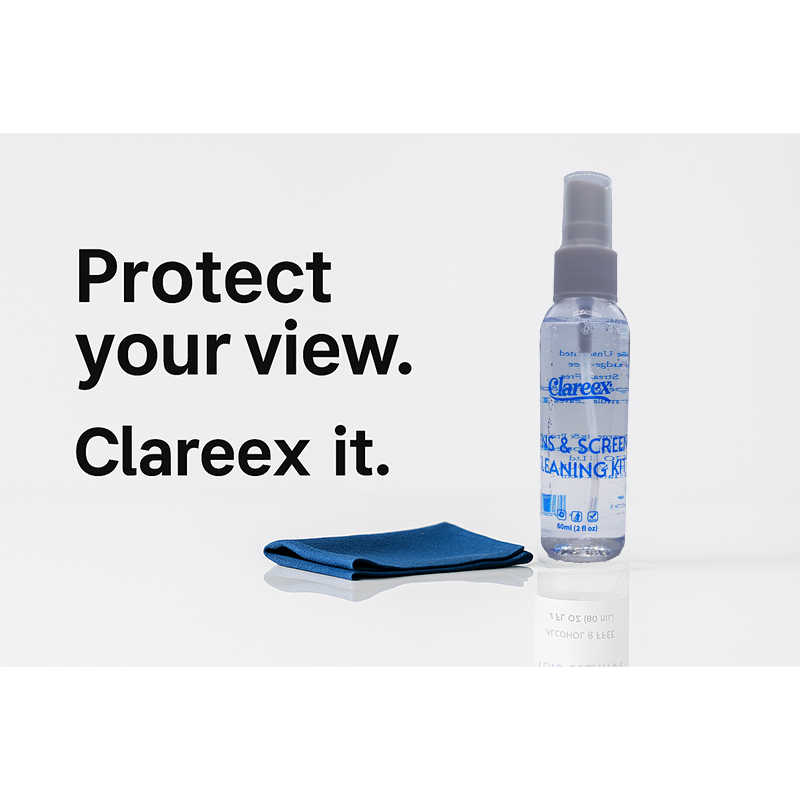
The Allure of “Cheap”: A Look at Buyer Psychology
Cheap lens cleaners often tempt us into thinking we’re making a smart, money-saving decision — even when we suspect the quality might be lacking. Psychologists call this price perception bias — the belief that spending less now is always the better option. But in truth, this mindset can lead to expensive mistakes later on.
We spot a bottle of lens cleaner for just £1.99 and instantly think, “It’s only a cleaner—why pay more?” That quick win of saving money feels satisfying. But what often gets overlooked is the hidden cost of using cheap lens cleaners: scratched lenses, reduced screen clarity, and long-term damage to coatings that can’t be reversed.
This mindset is especially common for low-involvement products — items we use regularly but don’t think much about, like lens cleaners. The problem is, cheap often means cutting corners. And when it comes to products used on sensitive surfaces like glasses and screens, the consequences of those shortcuts can add up — fast.
The Damaging Truth About Cheap Cleaners

At first glance, a generic lens spray may look harmless. But behind the low price tag is a chemical cocktail that could be slowly degrading your eyewear and devices.
Most cheap cleaners rely on high alcohol or ammonia-based solvents to cut through grease. While effective in the short term, they come with serious long-term risks:
- They strip protective coatings: Modern glasses and devices are coated with layers like anti-reflective, anti-glare, and oleophobic (oil-resistant) finishes. Alcohol gradually eats away at these layers, leaving surfaces exposed and vulnerable.
- They cause “crazing”: This is the appearance of tiny, web-like cracks on the lens surface — a known result of prolonged chemical exposure. Once crazing appears, there’s no going back.
- They degrade plastic and polycarbonate materials: Cheap sprays can make plastic lenses brittle, causing them to scratch or shatter more easily.
What starts as a quick, affordable fix often turns into a slow, invisible expense. Cheap lens cleaners might seem harmless at first, but their effects build up — cloudier lenses, streakier screens, and more frequent replacements. Over time, that budget choice quietly drains your wallet without you even noticing.
The Lifespan of Your Lenses
Let’s break down the real cost behind “cheap” versus “quality” lens cleaners — not just by price tag, but by how they impact your lenses over time.

The Cheap Spray: Looks Like a Deal, Acts Like a Threat
- Initial price: Low. Tempting. Easy to grab off a supermarket shelf.
- Performance: Often needs more product per use to get the job done.
- Damage risk: High. These cleaners often contain alcohol or harsh solvents that wear down coatings.
- Hidden costs: Scratches, haze, or coating breakdown that lead to premature replacement of glasses or screens.
End result? That £3 bottle can cost you a £300 lens replacement.
The Clareex Spray: Value That Lasts
- Formulation: Alcohol-free, gentle, and tested on high-end lenses and screens.
- Performance: Just 1–2 sprays go a long way — saving product and effort.
- Protection: Safe for anti-glare, anti-reflective, and oleophobic coatings.
- Real savings: A single 60ml bottle delivers hundreds of uses without a single streak or scratch.
Cost per use? Less than a penny. Peace of mind? Priceless.
Clareex: Your Partner in Long-Term Value
Choosing Clareex isn’t just about cleaning better — it’s about protecting what you already paid for. Think of your glasses, your iPad, your phone screen — they all cost money to replace. Clareex helps you extend the life of those investments.
- ✅ No alcohol, no damage
- ✅ Safe for all coatings and screen types
- ✅ Works in seconds — no smears, no streaks
- ✅ One 60ml bottle lasts months
You don’t need to think twice every time you spray. With Clareex, you clean with confidence — and save in the long run.
The Bottom Line: Protect Your Vision
What feels like a smart bargain at first can quietly cost you more in the long run. Cheap lens cleaners may save pennies today, but over time, they can lead to damaged coatings, reduced screen clarity, and the need for early replacements — all of which add up in both expense and daily frustration.
Frequent use of poor-quality lens cleaners can wear down protective coatings and reduce optical clarity over time. According to experts at the American Academy of Ophthalmology, the best way to clean your glasses is by using a lens-safe, alcohol-free cleaner paired with a microfiber cloth—never abrasive materials like tissues, paper towels, or clothing, which can scratch the surface.
Clareex gives you peace of mind. A streak-free clean. A non-alcoholic formula that’s safe for even the most delicate lenses and screens. And most importantly, the confidence that you’re doing what’s best for your vision.
Ready to clean smarter, not harder?
👉 Choose Clareex — the cleaner that protects your view and your value.

